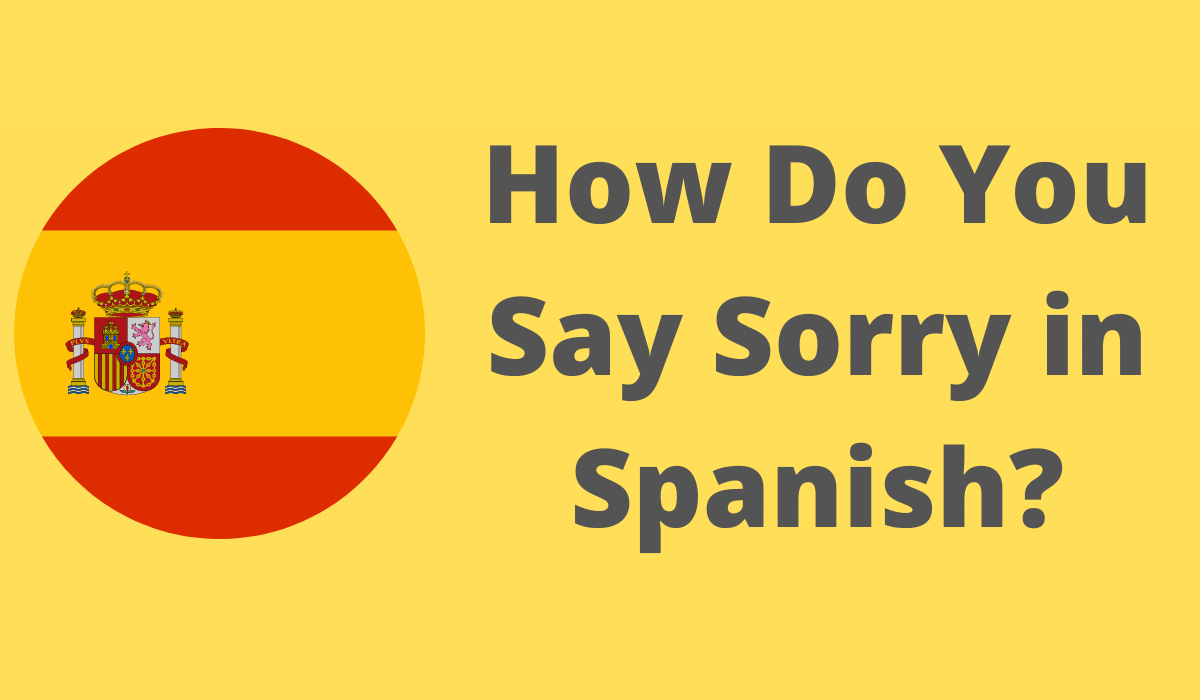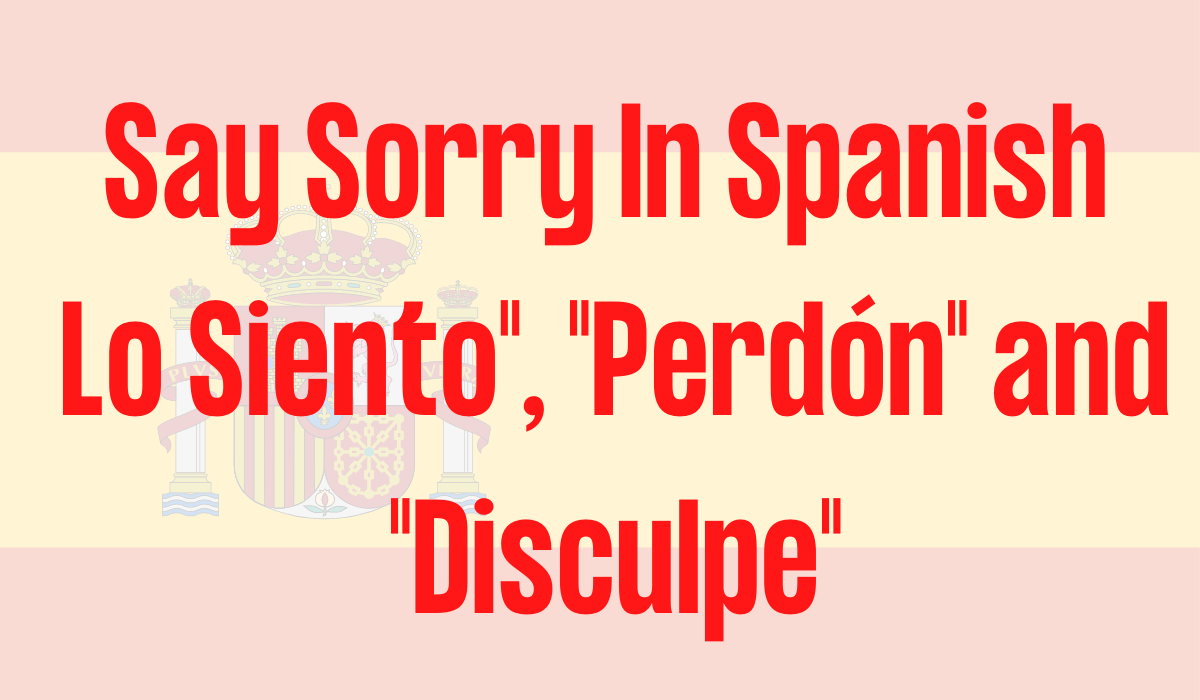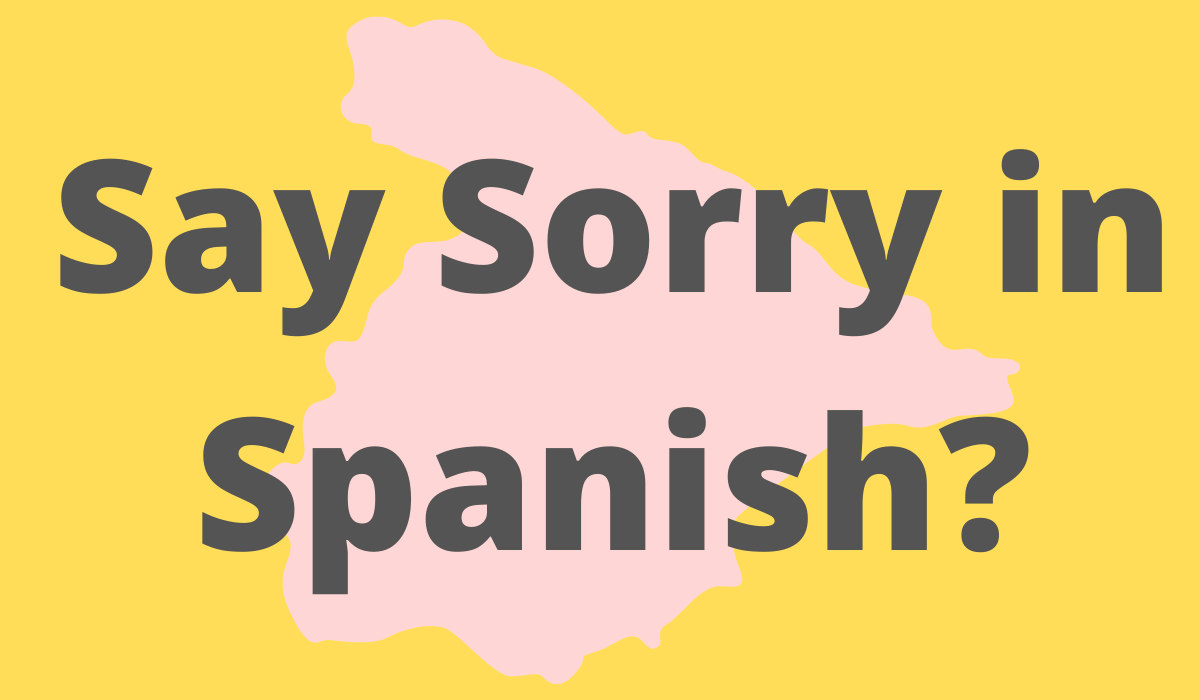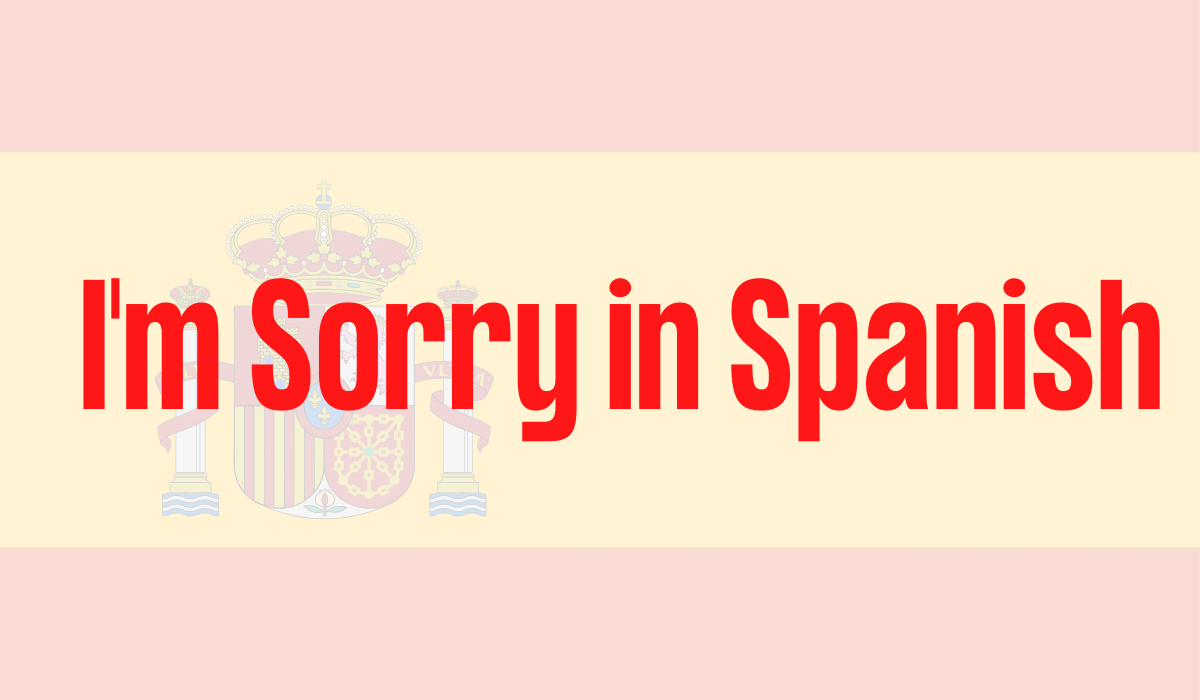
How Do You Say Sorry in Spanish?
In this article, we will learn how do you say sorry in Spanish? and what are the 3 ways to say “Sorry” in different contexts.
3 Ways To Say Sorry In Spanish

Say Sorry In Spanish Language “Lo Siento”, “Perdón” and “Disculpe”
The three words, “lo siento”, “perdón” and “disculpe” are very similar. Let’s see what the difference between 3 words context.
- Lo Siento: Use if you really feel sorry about it.
- Perdón: It means; you ask for an apology.
- Disculpe: This is also an apology, but it is a light and small apology.
Learn Some Common Spanish Words and Phrases Easily
Spanish is one of the most widely spoken languages in the world. It is an official language in 20+ countries and 1 of the 6 official languages of the United Nations.
Since more than 470 million people speak it, learning Spanish will help you connect with a wide range of cultures and communities worldwide. Learn Spanish to develop your business opportunities and make new friends across borders!
Some of the most common Spanish words are:

Say Sorry in Spanish
- ¿Qué? = What?
- No me gusta = I don’t like
- ¿Por qué? = Why?
- ¿Dónde? = Where?
- Hola = Hello
- Sí = Yes
- No = No
- Gracias = Thank you
- Lo siento = Sorry
- Salud = Bless you
- Me gusta = I like
- Adiós = Goodbye
- ¿Quién? = Who?
- Por favor = Please
1- Lo Siento:
“Lo siento” in Spanish means “I’m sorry.” It is a common phrase to express sympathy and regret something. Lo Siento is the perfect example of how do you say sorry in Spanish?.
Lo Siento is not just a simple phrase in Spanish; it is a way of saying I am sorry and deeply regret the pain you are going through. Lo Siento is used to express condolences to those who have lost someone close to them. Lo Siento is also used as an apology for hurting someone’s feelings.
The Spanish phrase “Lo siento, me equivoqué” literally translates to “I’m sorry, I made a mistake.”
2- Disculpe
Hmm, what does Disculpe mean in Spanish? Disculpe means sorry or apology in Spanish language. Many words sound similar but have different meanings but most peoples use this word to say sorry in Spanish. The word sorry is a perfect example of this about how do you say sorry in Spanish? In English, the word “sorry” is often used when someone has done something wrong or hurtful and wants to make amends with the other person.
In Spanish, the word “disculpen” means sorry in Spanish language, and it is typically used when someone has made a mistake or dropped something on accident. However, it can also be used when someone says something they did not mean to say and wants to apologize or correct themselves.
3- Perdón
The word “Perdón” is used in many different situations. The most general use of the word is when someone accidentally bumps into someone else. The person that they bumped into could say “Perdón” to apologize for bumping into them.
Context:
- A) When two people talk and one person bump into the other, they may say “Perdón.”
- B) When someone walks up to an open door and realizes it’s closed, they may say “Perdón” as an apology.
Many people find themselves seeking an apology from someone else in our society. The word ‘again’ implies that the person is asking for the same apology from the other person. This word is a good example of a figure of speech.
There are a few ways to say “sorry” in Spanish language, depending on the situation. If you want to apologize for any inconvenience, use Perdón; many peoples are still searching “how do you say sorry in Spanish?“. On the other hand, if you want to apologize for a mistake or insult, use disculpe. In extreme distress or emergency where there is no time to apologize, it is appropriate to use “lo siento“.

I’m Sorry in Spanish
Learning to apologize in other languages can be a difficult task. The Spanish language, for instance, has three variations of the word “sorry” that may be used under different circumstances. You can typically use lo siento and perdón interchangeably and disculpe only when you need to get somebody’s attention, or you want to emphasize something.
“Lo siento” is used to apologize for a very significant and egregious offense, like accidentally stepping on someone’s foot. “Perdón” is used for less serious offenses, like forgetting someone’s name. “Disculpe” is used to make an apology of little importance or consequence, like not holding the door open.
It doesn’t come naturally to many people. In this article, I’ll be discussing some of the most common words and expressions that non-native speakers of Spanish might find difficult to understand or use.
Spanish is a beautiful language with many nuances to its words. It’s important to understand which word best suits your situation, as using the wrong word can offend. You can easily say I’m sorry in Spanish language or “apologize” to someone else.
Google translate is an award-winning language learning system that has been proven to help people learn more languages faster. The program is designed to teach you the language.
We provide you with a full-immersion experience to help you become proficient in your new language. This means that you will be able to speak, read, and write the language from day 1. When you’re immersed in a language, it becomes a part of who you are and can be.
You will explore how small changes in your mindset can help you in Spanish. Pronunciation is one of the most challenging aspects of language learning. Many courses help you learn, but they don’t offer much feedback on your efforts. The best way to refine pronunciation is to get immediate feedback on your efforts. You can do this through a speech-to-text application or joining a language exchange.
Google translate helps you, if you want to find the meaning of I’m “Sorry” in Spanish so you can easily find the right context, with the help of its powerful translation tool. Learning to speak is a natural and gradual process. It is a gradual process from the very beginning.
Thanks for reading.






